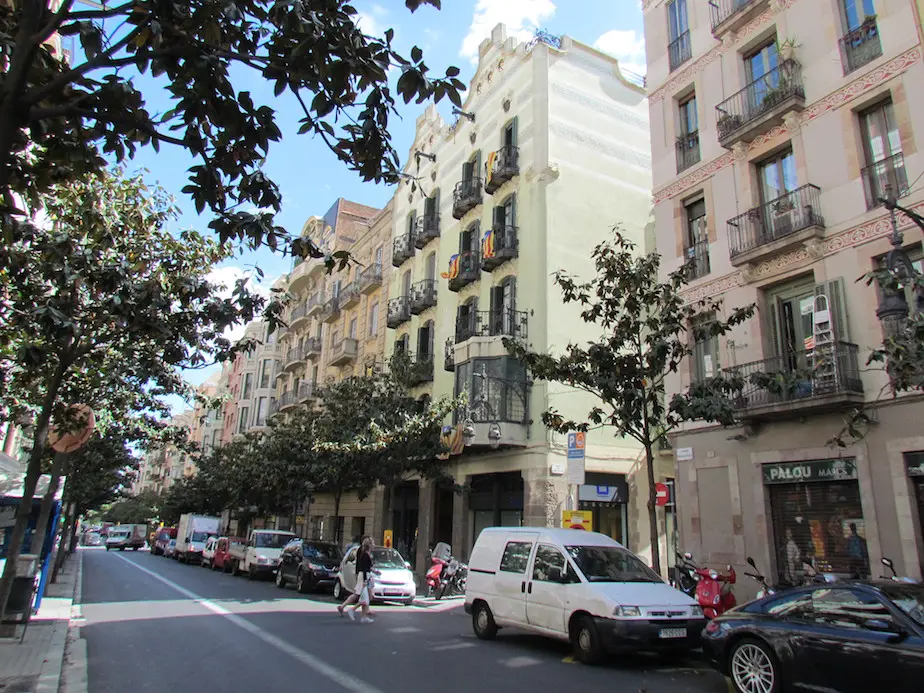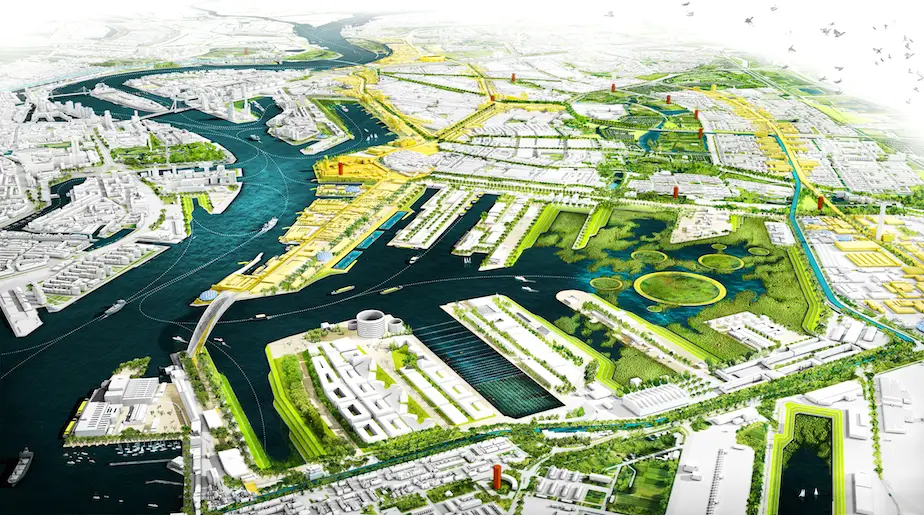It’s been almost two years since Superstorm Sandy hit New York City and caused unprecedented chaos. 8.5 million people were left without electricity, and 650,000 houses and 100,000 companies were either damaged or destroyed.
Since then, the focus has been on recovery, including the launch of Rebuild by Design – a competition “dedicated to creating innovative community- and policy-based solutions to protect U.S. cities that are most vulnerable to increasingly intense weather events and future uncertainties.”
The six winning projects from the competition, presented below, are featured in this year’s International Architecture Biennale Rotterdam until August 24th.
BIG U
The BIG U lives up to its name – it’s essentially a huge u-shaped barrier wrapping around and protecting Manhattan. Designed by a conglomerate that includes the Bjarke Ingels Group, this project shields 10 miles of the city against floodwater while at the same time providing new community facilities such as parks. Green space is an important part of urban resilience do to its ability to absorb water and act as a buffer against storms, meaning that making cities more resilient can actually have full-time benefits.
Living with the Bay: A Comprehensive Regional Resiliency Plan for Nassau County’s South Shore
This project looks to create a “buffered bay” in Long Island, integrating a broad range of measure that aim to keep residents safe while at the same time bringing economic and social boosts to the region. Acknowledging that there’s no one solution for a topic as complex as urban resilience, the project includes plans to mitigate storm damage and sea level rise through protective measures like marshes and dikes, manage the impact of excess rain water, and develop housing in areas that are “high and dry” and closely located to public transport.
New Meadowlands: Productive City + Regional Park
Green space is also a critical component in this project. Marshland restoration projects in New Jersey would be further extended to offer flood protection to the region, as well as creating publicly accessible recreation space. The marshes would protect the region against ocean surges, as well as collecting rainfall and reducing sewer overflows in neighboring towns.
Resist, Delay, Store, Discharge: A Comprehensive Strategy for Hoboken
This project aims to build coastal defences through a combination of hard infrastructure and soft landscape, along with policy recommendations for resilience best practice. This is presented as a 4 step plan:
1. Resist: Programmed hard infrastructure and soft landscape for coastal defense
2. Delay: Policy recommendations, guidelines, and urban infrastructure to slow rainwater runoff
3. Store: A circuit of interconnected green infrastructure to store and direct excess rainwater
4. Discharge: Water pumps & alternative routes to support drainage
Hunts Point Lifelines
Hunts Point is the hub of food supply for 22 million, making infrastructure resilience critical. This project would build flood protection along the waterfront, integrating a greenway for recreational use. A “micro-grid island” would also be developed, ensuring the region could continue to provide critical functions even if the main electricity grid went down.
LIVING BREAKWATERS
Rather than building walls against water, this project aims to embrace nature to make Staten Island more resilient. Building new reefs – a “reef street” as the project initiators call it – will create wildlife habitats as well as act as breakwaters during storms. This infrastructure would be paired with educational programs on the mainland, teaching local people about the role of water in nature and in creating resilient cities.
These six projects and more are on display at the International Architecture Biennale Rotterdam until August 24th. You can also find out more in the Rebuild by Design website.


